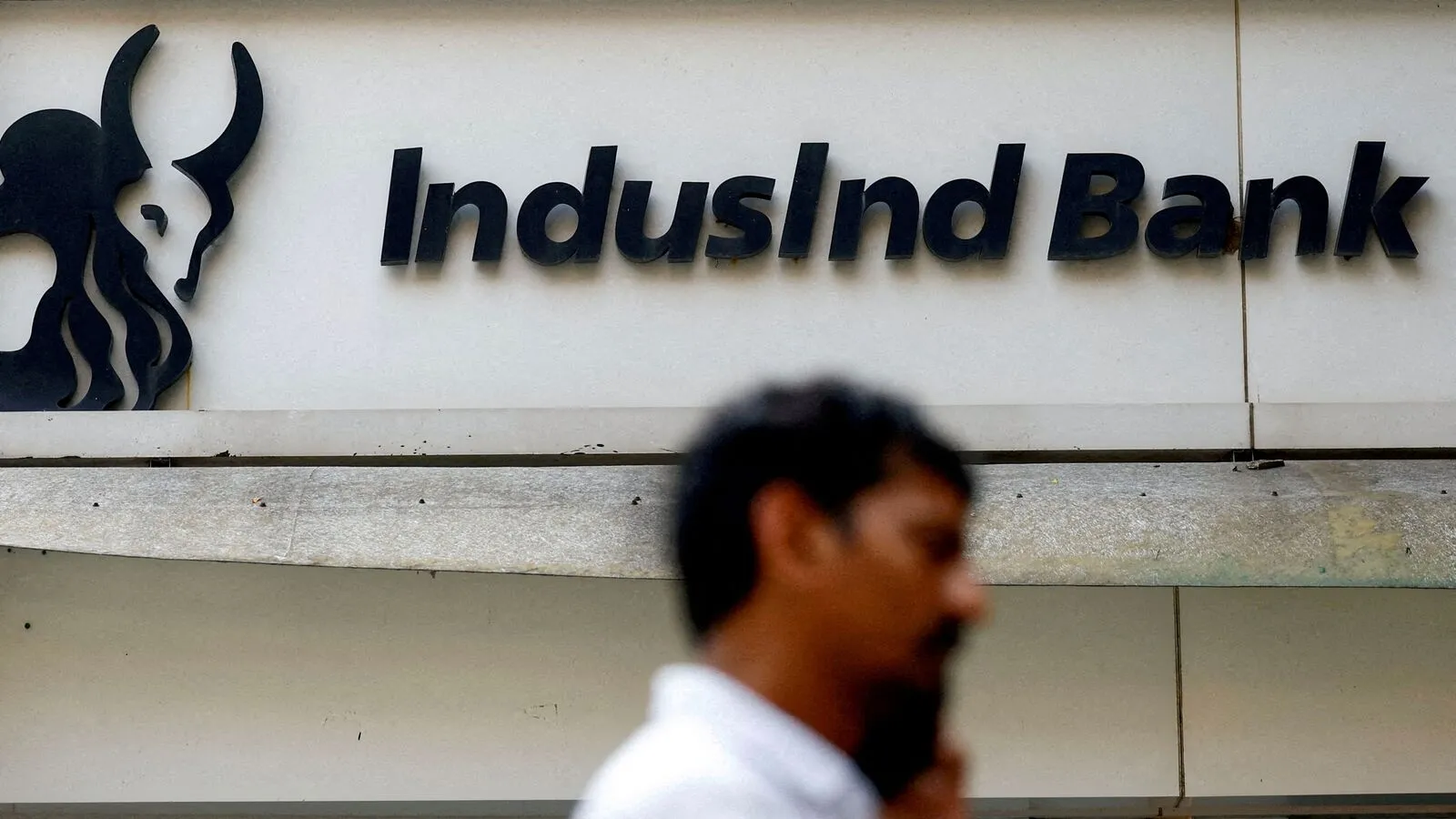Expert view: Market valuation looks stretched; maintain a 5–10% allocation to gold, says Rishabh Nahar of Qode Advisors

Expert view on markets: Rishabh Nahar, Partner and Fund Manager at Qode Advisors, is reducing the overall market exposure and shifting focus to select unique stock ideas where he still sees strong earnings momentum and low volatility, offering a good balance of risk and reward. In an interview with Mint, Nahar shares his views on market valuations, sectors to watch and strategy for gold. Here are edited excerpts of the interview:
How do you see the market’s performance in CY25 so far? What is your outlook for the rest of the year?
We are watching the post-Q1 rebound not just as a statistical uptick, but as confirmation of our momentum signals realigning after a brief drawdown.
The 4 per cent YTD (year-to-date) gain in the Nifty 50 versus nearly 10 per cent in the S&P 500 and nearly 8 per cent in MSCI EM tells us that Indian mid- and small-caps were oversold earlier in the year.
Once breadth improved and volatility cooled, our trend-following algorithms signalled a switch from defensives back into risk-on trades, which helped us capture that steady grind higher through May.
Looking ahead, I expect this orderly advance to persist so long as corporate earnings surprises remain positive and global macro risks stay contained.
From a risk‐management standpoint, we’ll maintain a modest volatility skirt around key support levels and hedge if our downside‐break thresholds are breached, but for now, the models favour staying long the market’s run.
Does the Indian stock market have valuation comfort? Should we be cautious?
On valuations, our factor overlays highlight that forward PEs near 20 times sit at multi-year highs, which historically compress future excess returns.
Quantitatively, this means our valuation screens are flagging fewer new buys at the index level, and instead we’re tilting toward sectors where our earnings-growth forecasts outpace implied growth baked into current prices.
In practice, we’re lowering our broad‐market risk budget and reallocating it to idiosyncratic ideas, where our earnings‐revision models and low‐volume screens still show attractive risk–reward profiles.
In sum, while broad-market returns may settle into mid-single digits from here, a disciplined factor blend and rigorous risk controls should allow us to outperform that baseline.
What is your assessment of Q4 earnings? Should we expect a better show from Q1FY26 onwards?
Quarter-four earnings paint a picture of breadth rather than brilliance.
Across the top 500 listed companies, median profit after tax advanced roughly 10 per cent quarter-on-quarter while sales rose about 5 per cent, with 69 per cent of firms posting positive profit growth.
Crucially, the dispersion favoured the interior of the market-cap curve: mid- and small-cap names delivered profit growth north of 20 per cent, versus low-single-digit advances for large-caps.
Factor diagnostics we run internally, profit revision momentum, sales acceleration, and operating-leverage screens, confirm that the earnings pulse is strongest in capital goods, select metals, and telecom, where pricing power and execution gains are translating cleanly into cash flow.
At the index level, the Nifty 100 “beat-or-meet” ratio has climbed back to 51 per cent, the best reading since mid-2023. This indicates that analysts’ downgrades earlier in the year have finally reset the bar to achievable levels.
Taken together, the quarter shows that profit growth is broad-based enough to sustain the cycle, but not yet explosive enough to justify fresh multiple expansion on its own.
What are the key triggers that will drive the domestic market? When do you expect the market to hit a fresh record high?
Looking ahead, the market’s next leg higher still hinges on a handful of catalysts that are measurable in our models but uncertain in their timing.
Foremost is monetary policy: with headline CPI drifting below the Reserve Bank of India’s 4 per cent midpoint, the window has opened for an initial 25- to 50-basis-point cut; a sustained easing cycle would lower discount rates and support rate-sensitive factors such as quality growth and housing proxies.
A second variable is the monsoon, which the IMD now projects at 106 per cent of the long-period average. Early rainfall could revive rural purchasing power and lift two-wheeler, FMCG and agro-inputs volumes into the festival season.
Third, clarity on US-India trade rules, especially around technology transfer and critical minerals, would help de-risk export-linked earnings streams.
Finally, corporate capex intent remains high on survey data but is yet to translate into hard spend; a visible pick-up in order books would underpin earnings trajectories for FY 26-27.
Valuations, meanwhile, leave little cushion: the Nifty trades near 22 times forward earnings, or roughly one standard deviation above its decade average, so any disappointment on these triggers could compress multiples.
That is why, despite our constructive three- to five-year view on India’s structural story, we continue to run fully invested but factor-balanced books tilting toward companies with improving earnings revision momentum, clean balance-sheets and demonstrable pricing power, while hedging outliers through disciplined risk overlays rather than trying to time six- or twelve-month index levels that, in truth, no one can consistently forecast.
What should be our strategy for defence and PSU stocks?
The Indian defence industry has demonstrated strong engineering capabilities in recent military operations and benefits from steady domestic demand alongside growing export opportunities.
While the military-industrial complex is well-positioned to become a significant contributor to the economy, it is challenging to determine whether this optimism is already reflected in current valuations and whether the sector can deliver truly outsized returns going forward.
Should we prefer PSU banks to private banks? What banking stocks should one buy at this juncture?
We no longer distinguish between PSU and private banks—both segments have delivered strong returns in the past when operating performance was robust and valuations were attractive.
Our focus today is on identifying banks whose future growth prospects are meaningfully underappreciated by the market.
At this juncture, we do not see any banking stocks offering that degree of asymmetry.
While many banks remain solid businesses, none currently meet the elevated return expectations or risk–reward thresholds we require for new convictions.
What are the sectors you believe can outperform in the next one to two years?
One compelling growth driver is the ongoing US–China trade tensions, which have spurred higher import tariffs and stricter regulatory scrutiny on Chinese pharmaceutical suppliers.
India’s well-established API manufacturing base, combined with a rising focus on differentiated products and biosimilars, positions Indian pharma companies to capture these displaced volumes in regulated markets.
By moving up the value chain—from pure generics to high-complexity formulations and speciality injectables—Indian firms can secure premium pricing, deepen customer relationships, and meaningfully increase their US market share over the next two years.
What is the outlook for gold? Is it time to buy or book profits?
We advocate maintaining a 5–10 per cent strategic allocation to gold across all time horizons.
This positioning serves as an effective hedge against inflation, negative real rates, and geopolitical uncertainty.
We recommend adding to positions on meaningful pullbacks, as even a modest allocation can help dampen the volatility of an equity-heavy portfolio.
Read all market-related news here
Read more stories by Nishant Kumar
Disclaimer: This story is for educational purposes only. The views and recommendations above are those of individual analysts or broking companies, not Mint. We advise investors to check with certified experts before making any investment decisions, as market conditions can change rapidly, and circumstances may vary.









